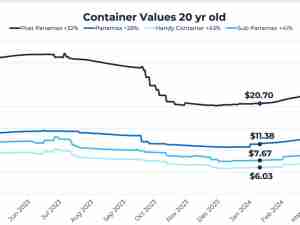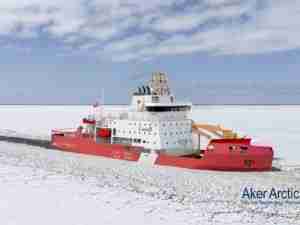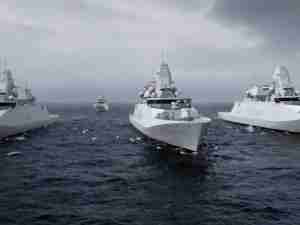Huge. Awesome. A biggie.
The Aug. 3 pact inked between Mitsui O.S.K. Lines, Ltd. (MOL) and the Jacksonville Port Authority (JAXPORT) is being heralded as that ' and more.
"It's huge," Roy Schleicher, JAXPORT's director of marketing and trade development, told the American Journal of Transportation. "It's the biggest thing to happen to Jacksonville since the port opened in 1565."
Indeed, the 160-acre MOL container terminal, replete with six post-Panamax container cranes, bodes to vault Jacksonville to among the busiest containerports in the US Southeast, perhaps advancing its throughput level beyond those of Charleston and Savannah, according to Schleicher.
Hiroyuki Sato, deputy president of Tokyo-based MOL, termed the Aug. 3 agreement-signing and groundbreaking event, "'the beginning of a great enterprise" and added that Jacksonville will be "the new South Atlantic gateway for global trade."
MOL officials cited ongoing infrastructure concerns on the US West Coast, growing need for an all-water link between Asia and the US East Coast and burgeoning Latin American trade as key reasons behind their decision to sign the 30-year lease deal, which is to give Jacksonville its first direct containership service with Asia by as early as 2007. They also noted Jacksonville's strategic geographic location and Interstate highway and rail connections.
"Awesome," exuded Raul Alfonso, JAXPORT's director of Latin American marketing and trade development. "Good for them, good for us. MOL is showing awesome vision, and, most likely, they will be followed by other carriers."
Alfonso said the anticipated imports from Asia should perfectly complement Jacksonville's current strength in exports to Puerto Rico and Latin America.
For many involved in global commerce, MOL's Jacksonville presence is being seen as an opportunity to save time and money.
"It's a biggie," Jim Valenti, chief executive officer of Jacksonville-based World Trade Group LLP, told AJOT, adding that he anticipates that additional container lines will soon decide to locate facilities at Jacksonville's port as well. "We're really excited."
World Trade Group units currently bring cargoes such as extruded aluminum products, fiberglass mesh screen and bamboo flooring into North Florida through Savannah's port, some 140 miles north of Jacksonville.
Valenti said his firm now pays between $400 and $500 each to get some 150 containers a year trucked down I-95 to North Florida from the Georgia port, plus he suffers with delays of from three days to a week because of a shortage of trucking capacity.
"We will save time and a fair chunk of money on every container," said Valenti, whose firm also has an office in Shenzhen, China.
The $200 million MOL terminal is to be built at the Dames Point Marine Terminal in Northeast Jacksonville, about 10 miles from the Atlantic Ocean and a mile from JAXPORT's Blount Island Marine Terminal. Additional phases could expand the facility to more than 200 acres and augment the two 1,200-foot-long berths planned for the initial phase.
The terminal is to be operated by Trans Pacific Container Service Corp. (TraPac), MOL's US terminal-operating subsidiary, which currently operates major container terminals in Los Angeles and Oakland.
Another MOL company, Mitsui OSK Bulk Shipping, already has a longstanding relationship with JAXPORT, having called Jacksonville for years with automobile shipments from Asia, part of activity that has made JAXPORT a leader among vehicle-handling ports.
Now, Jacksonville is seizing an opportunity to achieve leadership among containerports as well.
Schleicher projected that, within three years of becoming operational, the MOL terminal will handle more than 700,000 twenty-foot-equivalent container units (teus) at the JAXPORT facility.
"Right now, we do 740,000 teus a year," he said. "MOL will easily do that or more, so they'll more than double our container throughput.
"This is going to put us right up with








